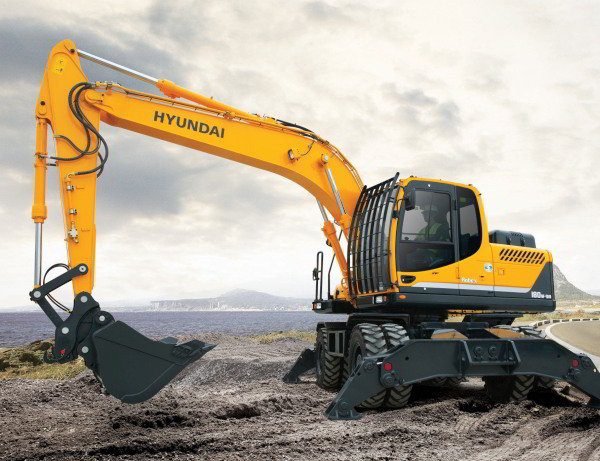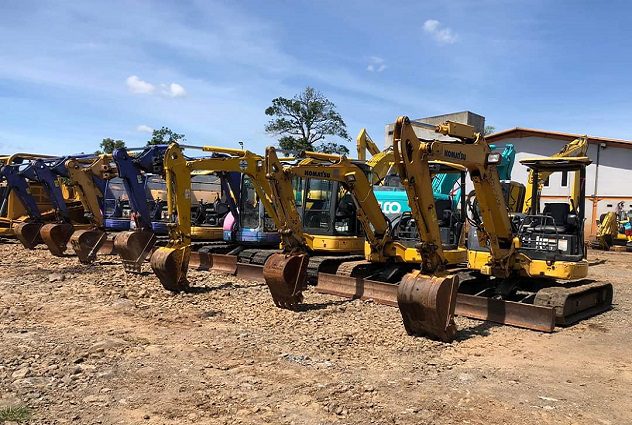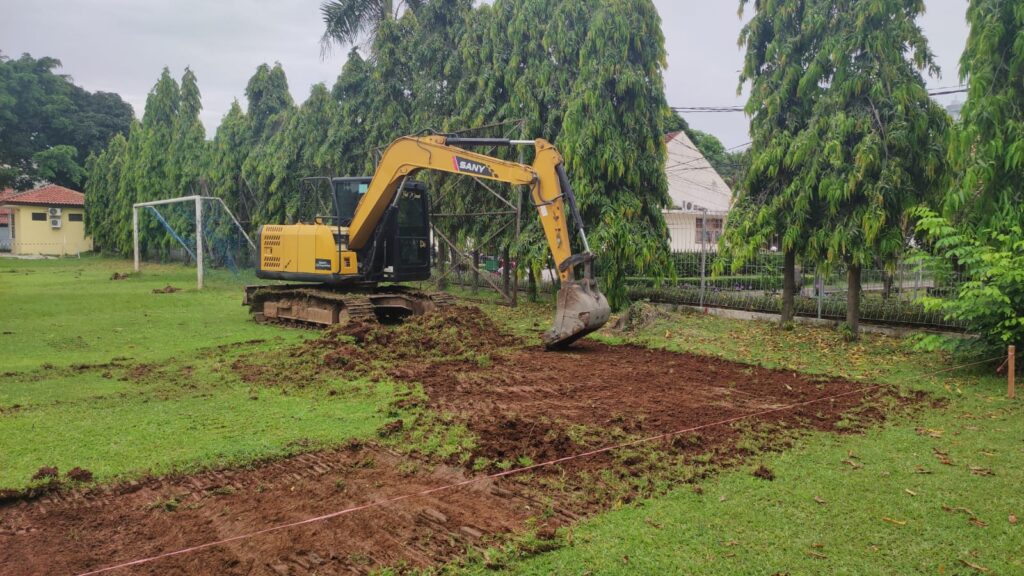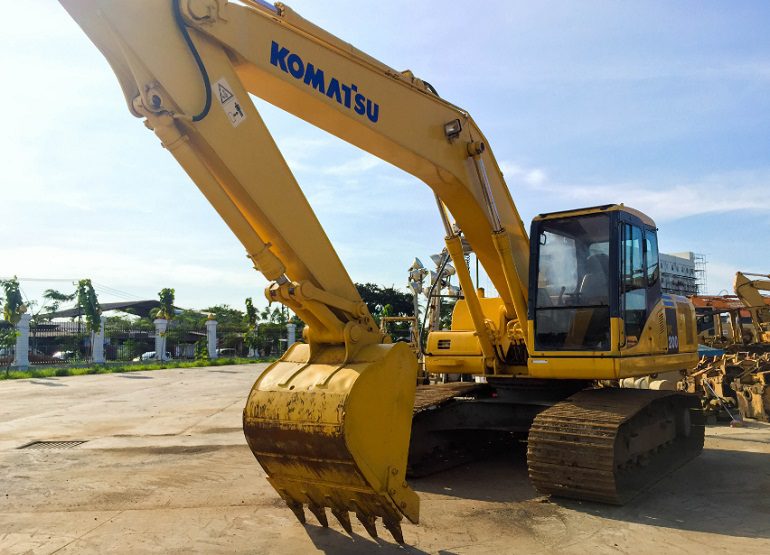In the construction industry, Landwork is the initial stage that determines the success of a project. Starting from the construction of a tall building, road, until the fare is open, all need the right excavation of the soil. According to the Ministry of PUPR's data 2024, almost 45% Obstacles at the construction stage come from the use of equipment that is not in accordance with field conditions.
Therefore, It is important to understand the characteristics of each heavy equipment before choosing it. Errors in choosing heavy equipment not only slow down the work, but can also increase costs significantly. In this article we will discuss various types of heavy equipment used specifically for soil excavation, complete with functionality, how it works up to its superiority so that you don't choose wrong.
1. Excavator
Who doesn't know the excavator? This type of heavy equipment is the most popular for soil excavation. This tool is equipped with a boom, arm, and buckets, Making excavators very flexible used in various projects ranging from house construction to large infrastructure.
How to work this tool namely with a hydraulic system that allows bucket to dig up the soil, Lifting material, then move it to another place with high precision. Excavators are available in various sizes, starting from the mini excavator 3 tons for narrow areas to large excavators 20 more tons for mining or dam projects.
Because of its flexibility, Excavators are the main choice of the contractor when it requires a combination of dug power, mobility, and efficiency.
2. Clamshell
Heavy equipment for the next excavation of the soil is clamshell, is a heavy equipment with bucket shaped like a clam that can open and close. This tool is generally used to excavate soft soil or freelance materials such as sand, lumpur, and gravel.
The way it works is quite unique, i.e. bucket clamshell is reduced to the surface of the material, then close to take load, then lifted using a crane or other drive tool. Because the reach can be long, Clamshell is often used in deep well -excavation work, The foundation of the pile, or river dredging. Although not as fast as excavators, Clamshell is superior to vertical work and internal excavation.
3. Backhoe Loader
A combination of tractors, loader, and backhoe becomes one or commonly known as backhoe loader, This tool is equipped with a bucket loader that serves to push or move the material, while on the back has a backhoe that functions to dig.
This tool is very practical to be used for medium scale projects because it can run two functions at once. For example, When making a trench, The backhoe part is used to dig, While the bucket loader in front can be used to pile back the ground or level the work area. Usually this tool is also used in urban areas or projects with limited space because it is more concise than large excavators.
4. Bulldozer
The next heavy equipment is bulldozer, This tool is known as a strong heavy equipment to push, flatten, and peel off the ground. With a large blade on the front, Bulldozer is able to shift the volume of land in large quantities at once.
In the work of excavation of the soil, Bulldozer is very effective used to peel the upper soil layer, leveling the work area, or make a project access road. Besides that, Bulldozer is also able to work in heavy terrain that is difficult to reach other tools, for example on rocky or muddy land.
With a large machine energy, Bulldozer is often a "Opening of the Road/Land Opening" in the work of large -scale excavations.
5. Loader
The loader is a heavy equipment with a large bucket with the front that serves to take and move the soil material to the dump truck or to other areas. This tool is different from the excavator which prioritizes the excavation, If the loader is more effective for moving and transporting material in short distances.
The way this loader works is similar to a giant spadder, that is, bucket is lowered, pushing the material to enter, then raised to be moved. Projects that are suitable for using this tool, such as road construction, housing, until the mining is open. The advantage is that a large bucket capacity can speed up the process of moving materials in large quantities.
6. Trencher
Trench is a heavy equipment specifically designed to make longitudinal excavations such as trenches or channels. This type of excavation is usually needed for the installation of water pipes, underground power cable, to the city drainage system.
There are two main types of Trenches, namely Chain Trenches and Wheel Trenches. Type of chain trancer with a jagged chain like a giant saw, while wheel trenches with large -toothed wheels. Both are able to produce precision excavations with width and depth as needed. Because of his expertise, This Trench is widely used in urban projects that demand accuracy and speed.
7. Scraper
Scraper is often referred to as "versatile tools" in landwork because it is able to peel, transport, as well as leveling the material with only one unit. Its shape resembles a large truck with a container (bowl) in the middle that can accommodate the ground.
For the way this tool works is also quite efficient, that is, by means of bowl inherited to erode the surface of the ground, The material is loaded, then transported to the location of the disposal or hoarding. When issuing a charge, Scraper can also level the land automatically. This is what makes it very useful in the medium -scale Cut and Fill project, For example, such as the construction of a toll road or airport runway.
8. Dragline
Land excavations also require tools often mentioned with dragline. This tool is known for its very long reach. There is a large bucket component suspended with cable, so that it can reach large and deep areas that are difficult to do ordinary excavators.
Usually this tool is mounted on the crane structure, and work by dropping a bucket into the excavation area, then pull it using a cable to transport the material. Because of its very broad strength and reach, Dragline is widely used in river dredging, Open mining excavation, and dam construction. Although its size is massive, Dragline is very effective for work that requires a large volume in one operation.
9. Bucket Wheel Excavator (IF)
The type of heavy equipment for the last excavation of the soil is there is a bucket wheel excavator. Who doesn't know One of the biggest heavy equipment in the world? Of, Bucket Wheel Excavator is widely used in large -scale mine excavations. This tool has a giant wheel with many buckets that keep spinning to take the material.
With a continuous work system, BWE is able to dig and move material in very large quantities every hour. Therefore, This tool is commonly used in open mining such as coal or other industrial minerals.
Tips for Choosing Heavy Equipment for Land Exploring
Above we have discussed what heavy equipment used for excavation of the soil for small to small scale. However, Surely there are still many who are confused about how to choose the right heavy equipment so that the project runs smoothly and operational costs can still be on target. Therefore, Let's look at some important factors in choosing heavy equipment for soil excavation that needs to be considered before deciding, among others :
1. Project scale and land volume
The first tip is to first determine the scale of the project and the volume of the land to be done whether including a small or large project. For small projects such as the construction of a residence, You can use a mini excavator or backhoe loader is enough. However, If the project involves thousands of cubic meters of land such as toll road construction or industrial estate, then a large excavator is needed, bulldozer, or scraper.
2. Types of soil and material
Furthermore, You also need to see the type of soil and material to use. If the type of clay is wet, will be easier to handle with heavy equipment such as a bulldozer. Whereas, Types of hard or rocky soil will be more effective in using excavators with additional breakers. For past materials such as sand and gravel, You can use a loader, because it is more fitting and most efficient.
3. Land conditions and location access
Next tips, Also consider the condition of the land and access to project locations, whether narrow or broad. For narrow areas in urban areas it is more suitable to use agile tools such as backhoe loaders. Whereas large area of land with limited access requires large capacity tools such as dragline or bulldozer.
4. Cost Efficiency
Cost efficiency is also an important thing that you must consider before starting the project. In addition to rent or buy price, it is also necessary to calculate fuel consumption, maintenance costs, and operator needs. Sometimes small heavy equipment will be more fuel efficient, but takes longer, so that the total cost can be greater at the end. Whereas, Large heavy equipment may look expensive at the beginning, But the workmanship will be faster. Nah, This you try to compare this to see the price difference.
5. Choose a trusted heavy equipment provider
Make sure you choose a heavy equipment provider that offers a tool rental as well as an experienced operator support. Besides that, heavy equipment provider Also ready to help if there is damage to heavy equipment when the project is in progress, for example by providing a technical team or mechanical that is ready 24/7 on site comes to the location.
As a solution, PT Perkasa Sarana Utama is ready to be the best choice for heavy equipment rental for small to large scale projects, or for the type of construction project, mining, infrastructure, or even the excavation of land.
PSU provides complete heavy tools like an excavator, bulldozer, Vibro Roller and others with excellent conditions and supported by SIO and Silo Certified Operators. For how to rent or consult is very easy to do, You can contact via whatsapp in this number 0811-358-378 And our team will respond and provide fast and precise recommendations according to project needs.
Interestingly, PSU is offering special offers or discounts up to 10% If you claim this promo right now. Wait what else? Yuk, Rent heavy tools in PSU and don't forget follow Instagram PSU To get the latest updates from us.








